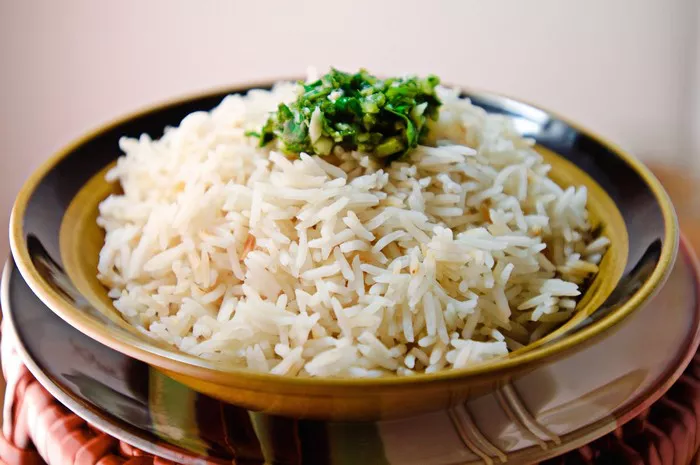Rice holds a central place in Chinese cuisine, not only for its nutritional value but also for its cultural significance. The techniques used to cook rice in Chinese cuisine are diverse and nuanced, reflecting centuries of culinary refinement. From the choice of rice varieties to the precise measurements of water and heat, every step in the process contributes to achieving the perfect bowl of fluffy, fragrant rice. In this article, we will delve into the art of cooking rice the Chinese way, exploring the methods, tools, and cultural importance associated with this fundamental staple.
The Importance of Rice in Chinese Cuisine
Rice is considered the staple food in China, where it has been cultivated for thousands of years. Its significance extends beyond mere sustenance; rice is deeply intertwined with Chinese culture and customs. The Chinese term for “eat rice” (吃饭, chī fàn) directly translates to “eat food,” emphasizing the centrality of rice in meals. In traditional Chinese philosophy, the importance of rice is reflected in the saying, “民以食为天” (mín yǐ shí wéi tiān), which means “food is the first necessity of the people.”
Rice is not merely a side dish but often the main component of a meal. Its versatility allows for various preparations, from congee (rice porridge) to fried rice and rice dumplings. The quality of rice is paramount, with different regions favoring specific varieties based on texture, flavor, and preferred cooking methods.
Choosing the Right Rice
The first step to cooking exceptional Chinese rice is selecting the appropriate variety. Common types of rice used in Chinese cooking include:
1. Long Grain Rice (chánglì mǐ): This rice variety is known for its slender grains that remain separate and fluffy after cooking. It’s ideal for dishes like Yangzhou fried rice or as a plain accompaniment to savory dishes.
2. Short Grain Rice (duǎnlì mǐ): Short-grain rice tends to be stickier and more glutinous, making it suitable for sushi, rice cakes, and certain types of congee.
3. Glutinous Rice (nuòmǐ): Also known as sticky rice, this type is used in both sweet and savory dishes, such as zongzi (sticky rice dumplings) and sweet rice cakes.
The quality of rice significantly impacts the final dish, so discerning cooks pay careful attention to factors such as grain size, fragrance, and moisture content when selecting rice.
Rinsing and Soaking
Before cooking, rice must be rinsed to remove excess starch and impurities. This step ensures that the cooked rice will be fluffy and not overly sticky. Chinese cooks typically rinse rice in a bowl or pot under cold running water, gently swishing the grains with their fingers until the water runs clear. Some varieties may benefit from soaking in water for 20 to 30 minutes before cooking, which helps the grains cook more evenly.
Cooking Techniques
Chinese cooking methods for rice are tailored to each rice variety to achieve the desired texture and flavor:
1. Steaming (zhēng): Steaming rice preserves its natural flavor and texture. This method is commonly used for glutinous rice and sticky rice dishes, where the grains should be moist and slightly sticky.
2. Boiling (zhǔ): Boiling rice in water is the most traditional method. The ratio of water to rice and the cooking time vary depending on the type of rice and desired consistency.
3. Absorption Method (mèn): This method involves cooking rice in a covered pot with just enough water to be absorbed during cooking. It’s commonly used for cooking rice in clay pots or making rice porridge.
Traditional Tools for Cooking Rice
Chinese kitchens traditionally employ specific tools and utensils for cooking rice:
1. Rice Cooker (diàn fàn bāo): Modern rice cookers are ubiquitous in Chinese households, offering convenience and consistent results. These devices automate the cooking process and are designed to accommodate various types of rice.
2. Clay Pot (shāguō): Clay pots are favored for cooking rice because they distribute heat evenly, resulting in a well-cooked and slightly crispy layer of rice at the bottom, known as guoba.
3. Bamboo Steamer (zhú zhēnglóng): Steaming rice in a bamboo steamer imparts a subtle aroma and texture that complements certain Chinese dishes.
Cultural Symbolism and Customs
In Chinese culture, rice symbolizes prosperity, abundance, and familial unity. It features prominently in celebrations such as weddings and festivals. For example, during the Mid-Autumn Festival, mooncakes made from glutinous rice paste are a popular delicacy shared among family and friends.
Rice-related customs also abound in Chinese traditions. The act of offering rice to ancestors during ceremonies reflects filial piety and respect for one’s heritage. Additionally, rice plays a central role in Chinese idiomatic expressions, such as “饭可粒粒皆辛苦” (fàn kě lì lì jiē xīnkǔ), meaning “every grain of rice is the result of hard work,” highlighting the value placed on food and labor.
Conclusion
Cooking rice is not merely a culinary task in Chinese culture—it is an art form that embodies history, tradition, and meticulous technique. The careful selection of rice varieties, paired with precise cooking methods, ensures that rice remains a cherished staple in Chinese cuisine. Whether served plain or as part of a complex dish, rice continues to be a symbol of sustenance, culture, and community throughout China and beyond. Mastering the art of cooking rice is a testament to the enduring legacy of Chinese culinary craftsmanship.
Related Topics:


























